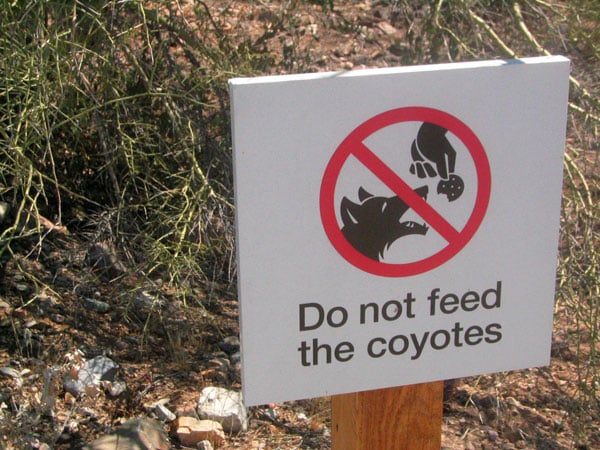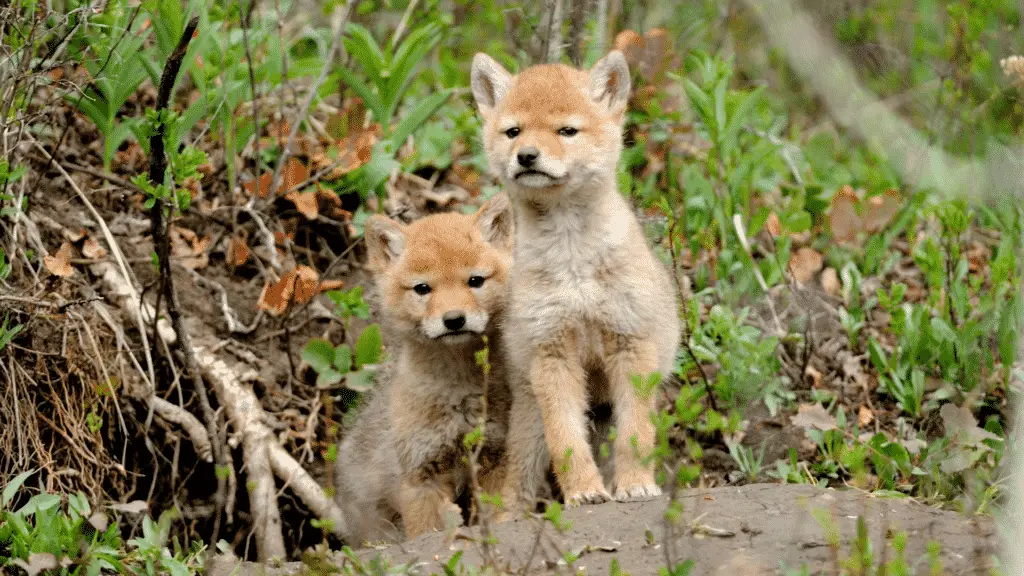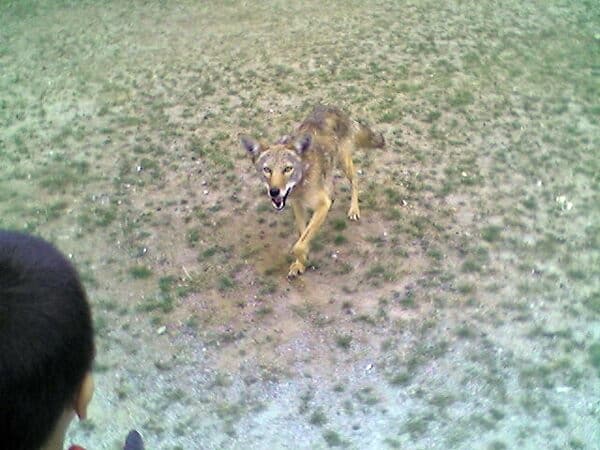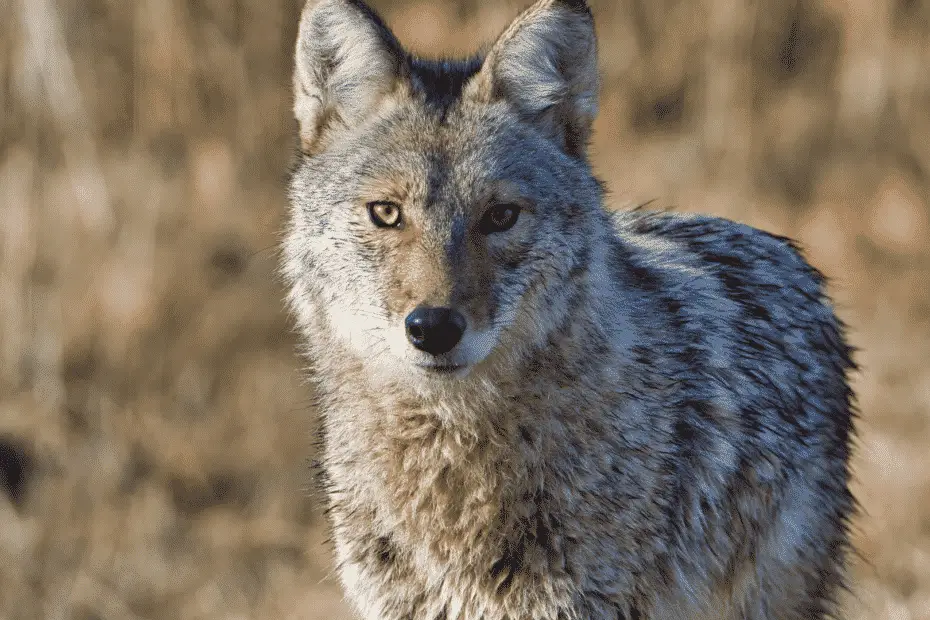Wildlife sightings are unquestionably one of the most exciting aspects of hiking, but it’s important to learn how to interact with wildlife on the trail. I’ve dealt with coyotes countless times hiking through the trails near my house. It’s always an exciting yet scary experience, but what should you do if you see a coyote while hiking?
Coyote attacks on humans are extremely rare, but you still need to be cautious. If you encounter a coyote on a hike, keep your distance, secure your pets/children, and never run away since it can trigger their chase response. Coyotes can run 40mph so the safer option is to make some noise and try to scare them away.
There has only been 2 recorded instances of a human being killed by a coyote so encountering a coyote is rarely dangerous. Most attacks are the result of a rabid animal that’s not behaving rationally. So if you encounter a coyote that’s not easily scared, your best bet is to avoid them and keep your distance.
Encountering A Coyote On A Hike
Coyotes are nocturnal animals that are found throughout most of the North America. They’re closely related to the wolf, but they rarely get larger than 44lbs and 37 inches long. The Gray Wolf averages 170lbs and over 5 feet long so they’re much larger than a coyote.
Coyotes may look like wolves, but they look just like a gray/brown dog with a long tail. I thought my neighbors got a new dog the first time I saw a coyote in my backyard. It looked like an emaciated German Shephard.
You’ve probably heard coyotes yipping and howling in the woods at night, but you’ll rarely see them during the day. They usually hunt in packs so if you see one coyote in the area, there’s probably more nearby.
Coyotes are nocturnal animals so it’s rare to see them on a hike, but it does happen. Here’s what you should do if you encounter a coyote on a hike.
- Avoid Them: Seeing a coyote on the trail usually isn’t a problem (even during the day). They’re extremely common so you will most likely run into a coyote eventually on the hiking trail. If you spot a coyote give them plenty of space and find an alternative route that goes around them. A coyote that doesn’t scare easily is either guarding their den or rabid (both instances are dangerous).
- Make Lots Of Noise: You can almost always scare off a coyote by getting big and loud. Your presence is startling enough so it shouldn’t take much to scare a coyote away. Yelling and waving your arms should do the trick.
- Never Feed Them: Coyotes look just like a small dog so it can be tempting to feed them. Feeding coyotes probably won’t cause you any immediate danger, but it will make them more likely to approach other people in the future.
- Don’t Keep Food Around Your Tent: Coyotes are opportunistic hunters so they will be quick to go after food that’s left outside your tent. Leaving food around your tent or campsite will make coyotes bold and more likely to attack.
- Secure Pets and Children: It’s rare for a coyote to attack an adult, but they can seriously injure pets and young children. Leash up your dog and keep them close to your side. Coyotes are small so they’ll rarely attack children, but keep them close by as well.
- Stand Your Ground An Maintain Eye Contact: Standing your ground is extremely important when encountering a coyote on a hike. Unlike bears, wolves, and mountain lions, coyotes can be easily intimidated. Maintaining eye contact and standing strong is usually enough to scare them away.
- Don’t Run Away From Coyotes: Coyotes can run up to 40mph so there’s no point in trying to run away. They can easily outrun you and it might trigger a predator chase response. If you come face to face with a coyote make some noise and try to scare it off. If that doesn’t work, back away slowly and calmy fin another route. Coyotes don’t see humans as food so there’s very little risk of them approaching.
Will A Coyote Attack You?

Coyotes generally hunt rodents and other small animals. They are wily opportunistic hunters, but there’s very little risk of being attacked by a coyote. It’s more likely to be attacked by your neighbors dog than a wild coyote.
Humans are way larger than a coyotes typical food source. Even children are bigger than the rabbits, skunks, mice, etc. that coyotes usually eat. So there’s very little risk of being attacked by a coyote, since they don’t see you as a food source. They generally steer clear of humans, even when they’re hunting in packs.
The risk of injury isn’t worth attacking a human when there are easier food sources available. Still, it’s always a good idea to give coyotes a wide berth and be prepared in the unlikely event that you come across a coyote on a hike or camping trip. As with most wild animals, there are certain human behaviors that increase the likelihood of being attacked.
It May Be Hard To Scare Off Some Coyotes

Coyotes are generally easy to scare off, but there are times where it can be a challenge. Coyotes that have become accustomed to humans (food trained), or are establishing a family during mating season can be hard to scare off. This makes them far more dangerous.
You may have to get loud and wave your arms if standing your ground and maintaining eye contact doesn’t work. That works in 99% of cases, but you may need to throw sticks or stones towards the coyote to scare it further.
Fight Back If You’re Attacked By A Coyote

There’s a very small chance of ever being attacked by a coyote. There are less than 5 coyote attacks per year and they almost always involve small children, pets, or a rabid animal. The attacks are rarely fatal with only 2 deaths over the last 50 years.
Being attacked by a coyote is rare, but it can happen. Coyotes rarely weigh more than 35lbs so they’re fairly easy to fight off. Most attacks result in minor injuries similar to being attacked by a small dog. Plus it doesn’t take much to scare them off during a fight.
You need to fight back if you’re ever attacked by a coyote. Most coyote attacks are caused by a rabid animal so they’re not in a rational mindset. Rabies is extremely rare in coyotes and they rank at the very bottom of the rabies list alongside rabbits and beavers. The skunk, fox, or cat that’s hanging out in your yard is more likely to have rabies than a coyote.
Report Aggressive Coyotes Immediately
If you ever encounter an aggressive or fearless coyote, you need to report it as soon as possible to your local wildlife department. Coyotes are generally timid so encountering an aggressive coyote is almost always a sign of an underlying problem.
Signs of aggression are similar to those shown by dogs. Look for raised fur, growling, snarling, and lunging. They may be protecting their litter of pups or resource guarding, but it’s usually a sign of disease.
A coyote that’s avoiding humans/pets isn’t a concern. Just keep your distance and you shouldn’t have any problems. Only call the authorities when they’re being aggressive and pose a danger to yourself and others.




